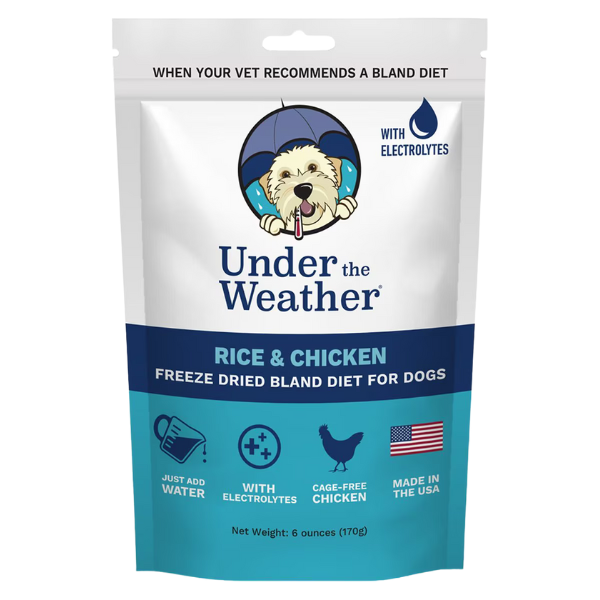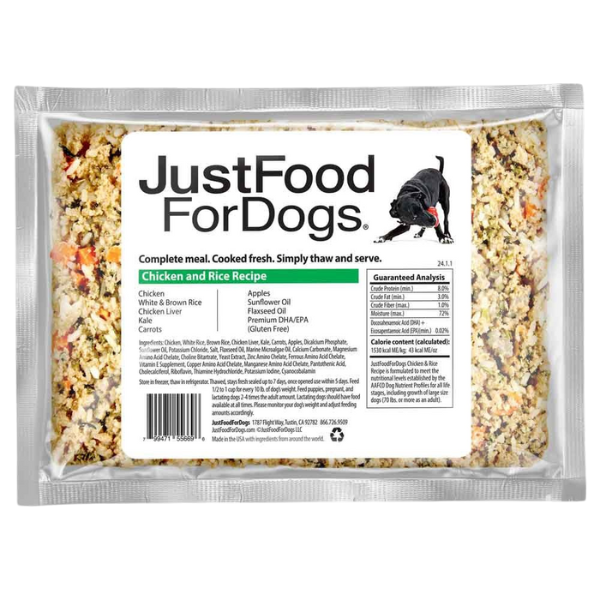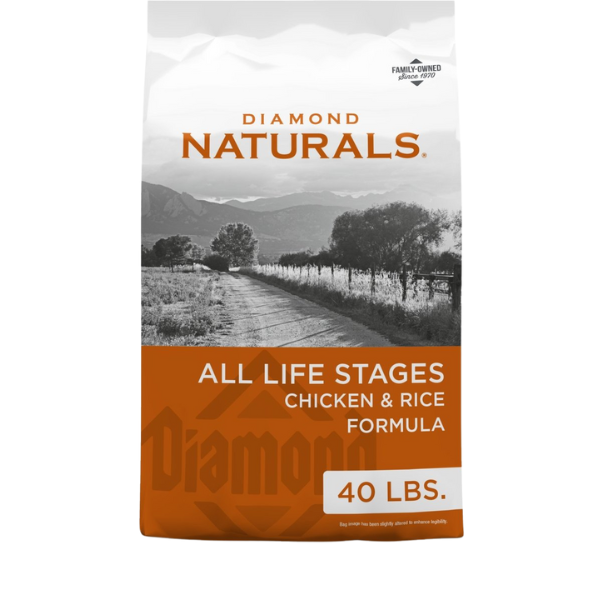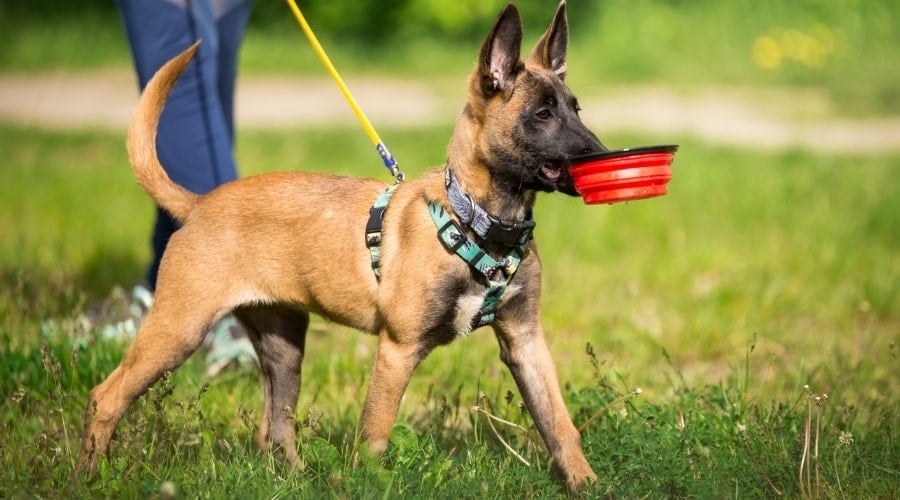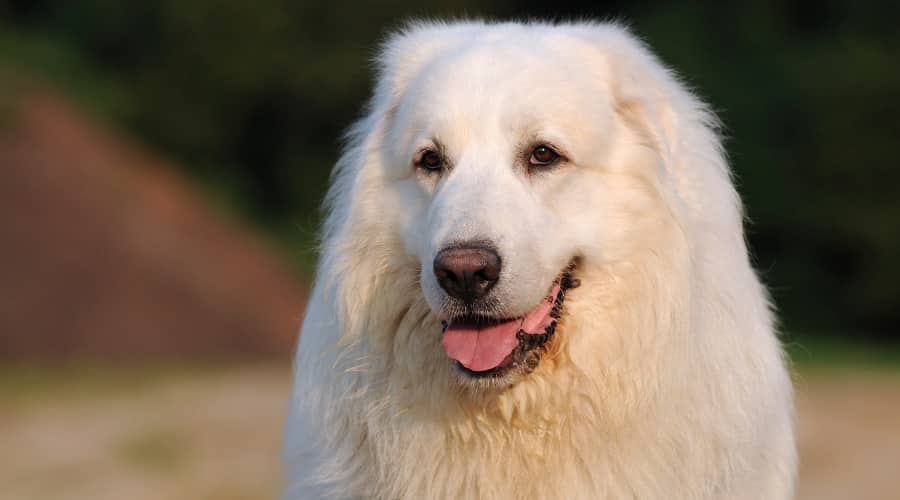Soothe Your Dog’s Stomach With This Simple Homemade Meal
When you purchase through links on our site, we may earn a commission. Here’s how it works.
Your dog just threw up on the rug and is now looking at you with eyes full of regret and digestive distress. Is it time to whip up the classic vet-approved combo: chicken and rice? Maybe. But not always.
Chicken and rice is a bland, easy-to-digest meal often recommended by veterinarians for mild gastrointestinal issues. That includes soft stools, minor vomiting, or recovery after dietary indiscretions (a.k.a. your dog ate something horrifying on the sidewalk).
However, it’s not a cure-all. If your dog is lethargic, refusing all food and water, vomiting uncontrollably, or has blood in their stool, skip the bland diet and call your vet.
What Vets Say About Chicken & Rice For Dogs
Veterinarians frequently suggest a bland diet of boiled chicken breast and white rice because it’s:
- Gentle on the stomach
- Low in fat
- Easily digestible
- Familiar and palatable to most dogs
Vets often suggest this combo during short-term recovery from diarrhea, vomiting, pancreatitis, or after surgery.
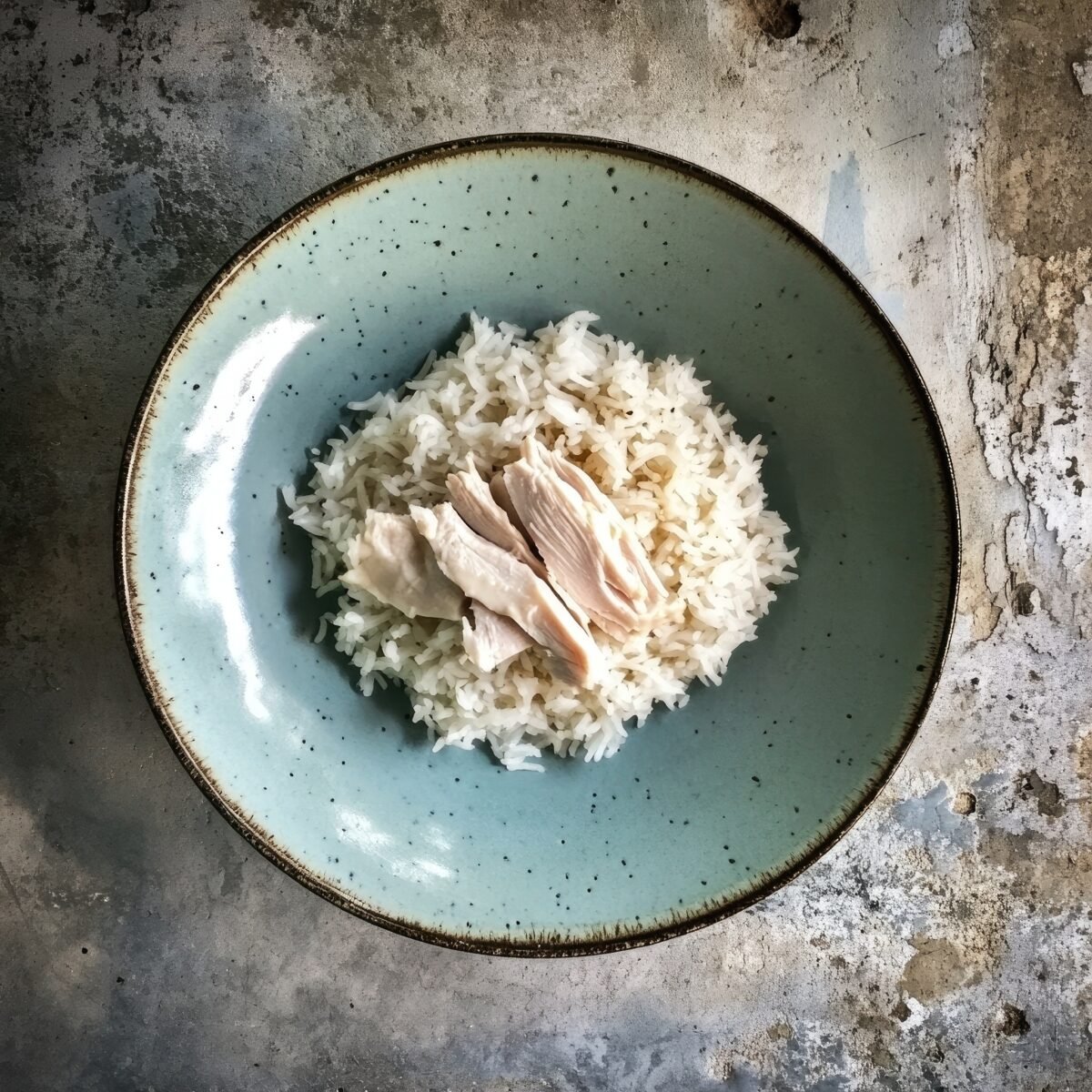
The meal gives your dog’s gut a break while still providing calories, hydration, and a small amount of protein. It can also help firm up loose stools and ease mild nausea.
But there’s a catch: it’s not balanced for long-term feeding. Chicken and rice lacks essential nutrients your dog needs. It’s a short-term fix, not a full-time meal plan.
How To Make Chicken & Rice For Dogs (With Step-By-Step Instructions)
Ingredients:
- 3 boneless, skinless chicken breasts
- 1 cup uncooked white rice (long grain preferred)
- Water
Instructions:
- Place chicken breasts in a large pot and cover with water.
- Bring to a boil, then reduce heat and simmer for 12–15 minutes or until fully cooked.
- Remove chicken and let it cool. Shred or dice into small, bite-sized pieces.
- In a separate pot, cook rice using the leftover chicken broth or plain water. Do not add salt, butter, or any seasoning.
- Let both the rice and chicken cool to room temperature before serving.
- Combine in a 2-to-1 ratio of rice to chicken for serving.
Pro Tip: Want to help with hydration? Add a splash of unsalted broth or cool water to your dog’s bowl. It can make the meal more appealing and easier to digest.
What Kind Of Chicken & Rice Should I Use?
Stick with lean, skinless chicken breast. Thighs and dark meat contain more fat, which can aggravate an already sensitive stomach. Fatty meat may also contribute to pancreatitis in at-risk dogs.
As for rice, white rice is preferred over brown. Brown rice has more fiber and can be tougher on the digestive system. The goal is easy digestion, so skip the whole grains.
No seasoning, garlic, onion, or oil. This is about belly-calming blandness—not culinary creativity.
How Much Chicken & Rice Should I Feed My Dog?
The amount to feed depends on your dog’s size, weight, and condition. In general, offer small portions multiple times per day. Here’s a helpful feeding guide:
| Dog’s Weight | Daily Total | Per Meal (3x/day) |
|---|---|---|
| 10 lbs | ½ – ¾ cup | ~¼ cup |
| 25 lbs | 1 – 1.5 cups | ~½ cup |
| 50 lbs | 2 – 3 cups | ~1 cup |
| 75+ lbs | 3 – 4 cups | ~1.5 cups |
Watch closely: Start with smaller portions and monitor how your dog responds. Energy level, appetite, and stool consistency are key indicators.
Sample 3-Day Recovery Plan Using Chicken & Rice
This sample plan can help you get your dog back on track without overwhelming their digestive system:
Day 1:
- Feed 3–4 small portions of the 2:1 rice-to-chicken mix.
- Encourage water intake.
- Watch for changes in energy level, stool, and appetite.
Day 2:
- Continue bland meals if symptoms improve.
- If stools are firming, increase serving size slightly.
- Add 1 tablespoon of plain pumpkin puree once daily if stool is still loose.
Day 3:
- Begin gradual transition back to regular dog food.
- Mix 25% regular food with 75% bland diet.
- Observe closely for any setbacks or signs of renewed tummy trouble.
When To Stop Feeding Chicken & When To Stop Feeding Chicken & Rice (And How To Transition Back)
Chicken and rice should not be fed for more than five consecutive days unless directed by your vet. Prolonged feeding can lead to nutritional imbalances, especially in puppies, seniors, or dogs with pre-existing conditions.

Transitioning back to regular food:
- Day 1: 75% bland diet, 25% regular food
- Day 2: 50/50 mix
- Day 3: 25% bland diet, 75% regular food
- Day 4: Full return to regular food
If your dog experiences a relapse (diarrhea, vomiting, refusal to eat), pause and consult your veterinarian before restarting the transition.
What If Chicken & Rice Doesn’t Work?
If your dog still has loose stool or vomiting after two days of bland food, it’s time to call your vet. This meal is a short-term solution, not a long-term fix for severe gastrointestinal conditions.
Watch for these signs that your dog needs veterinary care:
- Bloody diarrhea
- Lethargy or collapse
- Refusal to eat or drink
- Vomiting more than once per day
- Bloating or signs of pain
What Your Dog’s Poop Is Telling You
From green gunk to red streaks, dog poop comes in more shades than you’d expect. Learn what each color means (and when to worry) in our full dog poop colors decoded guide. It’s weirdly fascinating—and could save you a vet visit.
Should I Try Chicken & Rice Or Call The Vet? (Interactive Quiz)
Answer the following questions to help decide whether bland food is a safe starting point—or if your dog needs professional care ASAP.
1. Is your dog still eating and drinking water?
- Yes – Go to question 2
- No – Call your vet immediately
2. Is the vomiting mild (1–2x) or continuous?
- Mild – Go to question 3
- Continuous – Call your vet immediately
3. Is there blood in the vomit or diarrhea?
- No – Go to question 4
- Yes – Call your vet immediately
4. Is your dog alert and moving around normally?
- Yes – Chicken and rice may be appropriate
- No – Call your vet for evaluation
5. Have symptoms lasted more than 48 hours?
- No – Monitor and continue bland diet
- Yes – Time to call the vet
Reminder: This quiz is not a substitute for veterinary advice. When in doubt, it’s always safer to call your vet.
Other Gentle Foods You Can Try
Not every dog responds well to chicken and rice. Here are a few alternatives that may work better, depending on your pup’s preferences and needs:
- Ground turkey & plain mashed potatoes (no butter, salt, or cream)
- Boiled lean ground beef with white rice (drain fat thoroughly)
- Plain pumpkin (pumpkin puree or pumpkin powder work great)

Note: Always consult your vet before switching to a different recovery food, especially for dogs with pre-existing health issues.
Watch: Native Pet’s Bland Diet Menu For Dogs With Diarrhea
Looking for more bland diet options? Native Pet breaks down a vet-approved bland diet menu in this helpful video.
It introduces a variety of ingredients you can safely use to help settle your dog’s stomach, including alternatives to chicken and rice. If your pup turns up their nose at plain poultry, or if you’re wondering what else might work, this video is a great next step.
Real Stories: Why Pet Parents Swear By Chicken & Rice
I made chicken and rice for my dog when she had an upset tummy. It was really easy to make, and it helped settle her stomach.
Now that my family is vegetarian, we keep a can of pumpkin puree in our cupboard if she experiences digestive problems because it can help with diarrhea and other GI issues.
– Kimberly Alt, Dog Mom & Pet Insurance Expert For Canine Journal
As Cookie, my pint-sized Chihuahua, got older, her once-iron stomach became more of a diva. She’d sniff her food bowl like it was beneath her, then dramatically turn away as if to say, “Ugh, this again?”
Cue the dog food shuffle. We tried every flavor, every texture, every “gourmet” label. But nothing seemed to sit right, and poor Cookie would end up with an upset tummy and occasional diarrhea. Eventually, the vet recommended the classic chicken and rice reset.
And here’s where the little con artist shined.
Chicken and rice was Cookie’s absolute favorite. The moment it hit her bowl, she’d go from picky princess to ravenous gremlin.
That tiny tail wagged so fast that it was basically a blur. After a few rounds of this, I started to suspect she’d cracked the system: turn her nose up, act queasy, and BAM! Chicken dinner.
I’ll never know for sure. But I do know this: she was smart and stubborn and knew how to get exactly what she wanted. And honestly, I’d make chicken and rice for her every day if it meant seeing that little spark return.
– Danielle DeGroot, Longtime Pet Parent & Writer For Canine Journal
Best Store-Bought Chicken & Rice Dog Food
Want the convenience of a gentle diet without turning on your stove? Here are two trusted options that offer the benefits of bland food without the prep work.
Under The Weather Review
View on Amazon | View On Chewy
Under the Weather’s Chicken & Rice freeze-dried bland diet is a veterinarian-formulated meal designed specifically for pets recovering from digestive upset, surgery, or stress. It’s shelf-stable, quick to prepare, and ideal for pet parents who need a low-effort alternative to homemade chicken and rice.
Simply add boiling water, wait for it to rehydrate, and serve.
This product is made in the USA and free from artificial ingredients, making it a trustworthy option when your vet recommends a bland diet. It’s also available in various flavors beyond just chicken, including rice with hamburger and turkey blends, providing flexibility if your dog is picky or has allergies.
Highlights
- Freeze-dried, single-serving pouches for on-the-go or quick recovery meals
- No artificial ingredients, gluten, or dyes
- Developed by veterinarians
- Long shelf life; no refrigeration needed
- Made in the USA
Choose this if: You want a convenient, low-prep bland diet that’s ready in minutes and trusted by vets. Perfect for traveling, emergencies, or when cooking isn’t an option.
JustFoodForDogs Chicken & White Rice Review
View on Amazon | View On Chewy
JustFoodForDogs gave their classic Chicken & Rice recipe a nutritional upgrade, making it a balanced, long-term option for puppies and adult dogs.
This gluten-free recipe includes nutrient-dense ingredients like chicken thighs, brown rice, kale, carrots, apples, and chicken liver. It’s higher in calcium and phosphorus, which supports growing puppies—including large breeds—and pregnant or lactating dogs.
It also features gut-friendly prebiotics to support healthy digestion and a stronger immune system. Fish oil has been swapped for more sustainable and bioavailable omega-3 sources: flaxseed and microalgae oil, both promoting skin and coat health.
Highlights
- Nutritionally complete and balanced for long-term feeding
- Ideal for puppies, adult dogs, and nursing moms
- Supports healthy digestion and immune function with added prebiotics
- Omega-3s from flaxseed and algae oil (no fish)
- Made with 100% human-grade ingredients, including chicken thighs and liver
Choose this if: You want a whole-food, long-term diet that supports digestion, growth, and sustainability. Great for dogs who need to avoid beef, fish, or lamb.
Diamond Naturals All Life Stages Chicken & Rice Review
View on Amazon | View On Chewy
Diamond Naturals Chicken & Rice Formula is a dry kibble made with real cage-free chicken as the first ingredient, formulated to support overall wellness with an emphasis on strong muscles, digestion, and immune health. While it’s not a prescription or bland diet, it does feature ingredients that promote healthy digestion, including a proprietary blend of probiotics and prebiotic fiber from sources like beet pulp and dried chicory root.
This formula is crafted in the USA by a family-owned company and incorporates a variety of whole-food superfoods such as blueberries, pumpkin, kale, chia seed, and quinoa. It’s also fortified with omega fatty acids, antioxidants, and essential nutrients for skin, coat, and joint health.
Unlike many standard kibbles, it’s free from corn, wheat, artificial flavors, or colors.
Highlights
- Real cage-free chicken is the #1 ingredient
- 26% protein and 16% fat to support lean muscle and energy
- Fortified with species-specific probiotics for digestion
- Includes antioxidant-rich fruits and veggies like blueberries and spinach
- Made in the USA with no corn, wheat, or artificial additives
Choose this if: You’re looking for an affordable, nutrient-rich kibble that supports digestion and overall health—not a bland recovery diet, but a solid everyday option for dogs with sensitive stomachs.
More Resources For Doggy Digestive Troubles
If your dog continues to experience digestive issues, there’s often more to the story than a bland diet can solve. Recurring diarrhea, vomiting, or food sensitivities may signal underlying health conditions or require a deeper dive into your dog’s diet and gut health.
Below, you’ll find expert-backed articles to help you understand common canine GI problems, what causes them, and how to support your pup’s recovery and long-term wellness.
Dog Diarrhea: Causes, Remedies & When To Worry
Diarrhea is one of the most common digestive issues in dogs, and while it’s often mild and short-lived, it can also signal something more serious.
Dietary indiscretions (hello, trash can buffet), stress, parasites, and infections are all possible culprits. Mild cases usually resolve with a bland diet like chicken and rice, but persistent or watery diarrhea requires a closer look.
If your dog is otherwise acting normal, you may be able to treat diarrhea at home. Our guide on what to give a dog with diarrhea breaks down safe options like plain pumpkin, electrolytes, and probiotics.
Looking for more natural solutions? We share home remedies that may help your pup bounce back without medication. Just be sure to call your vet if symptoms last longer than 48 hours or are accompanied by vomiting, blood, or lethargy.
Dog Vomiting: What It Means & What To Do
One-time vomiting after eating grass? Probably not a big deal.
Repeated vomiting, however, can be a sign of gastrointestinal inflammation, pancreatitis, parasites, or a dietary sensitivity. The key is watching the frequency, color, and whether other symptoms (like lethargy or refusal to eat) are also present.
Our article on dog vomiting helps you identify when to wait it out and when it’s time to get to the vet. You’ll also find insights into common triggers and what to feed your dog while their stomach settles—beyond just the bland diet.
IBD In Dogs: When Tummy Trouble Becomes Chronic
If your dog’s digestive issues are ongoing, they could be suffering from Inflammatory Bowel Disease (IBD). This chronic condition causes inflammation in the intestinal tract, leading to symptoms like chronic diarrhea, vomiting, weight loss, and poor appetite.
Our guide to IBD in dogs explains how it’s diagnosed, managed, and treated. While chicken and rice may help soothe flare-ups temporarily, IBD typically requires long-term dietary changes and sometimes medication.
If your dog has recurrent GI upset that doesn’t respond to bland food or comes back frequently, ask your vet about IBD testing.
Pancreatitis In Dogs: A Serious Condition To Know About
Pancreatitis is the inflammation of the pancreas and can be caused by high-fat foods, certain medications, or underlying health conditions. Symptoms include vomiting, diarrhea, fever, abdominal pain, and lethargy. It can be life-threatening if left untreated.
Read our full guide to pancreatitis in dogs to learn how to recognize early warning signs and what treatment typically involves. In many cases, a vet will recommend a bland, low-fat diet like chicken and rice during recovery.
Once stabilized, dogs with pancreatitis often need to transition to a specialized diet. We break down those choices in our review of the best dog foods for pancreatitis.
Dog Gut Health: Why It Matters More Than You Think
Your dog’s gut is home to trillions of bacteria that help digest food, fight off pathogens, and regulate inflammation. When that delicate microbiome gets out of balance—due to antibiotics, poor diet, stress, or illness—digestive symptoms like diarrhea, bloating, or constipation can occur.
Check out our guide to dog gut health to learn how to check your dog’s gut health. Healthy poop starts with a healthy gut, and building that resilience is key for long-term wellness—not just treating symptoms when they arise.
Frequently Asked Questions
Here are some questions our readers often ask about chicken and rice for dogs. Don’t see yours? Ask us in the comments!
Can I Feed My Dog Chicken And Rice Every Day?
No, it’s not a balanced long-term solution. Chicken and rice is excellent for short-term relief, but it lacks essential nutrients. Feeding only chicken and rice can lead to nutritional deficiencies over time.
If your dog has chronic digestive issues, your vet may recommend a prescription diet or help you transition to a commercial food designed for sensitive stomachs.
Will Chicken And Rice Help My Dog’s Diarrhea?
Yes, in many cases it can. The simplicity and digestibility of boiled white meat chicken and white rice help firm up stool and soothe inflammation in the digestive tract.
Following the correct ratios and avoiding fatty cuts or brown rice is essential. Monitor your dog’s stool closely. If diarrhea continues after 48 hours or worsens, stop the bland diet and call your vet.
Why Is My Dog’s Poop Yellow After Eating Chicken And Rice?
Yellow stool after eating chicken and rice is common and usually not a cause for concern. White rice and plain chicken can change the color and texture of poop because of their simplicity and lack of added ingredients.
However, if your dog’s poop stays yellow after you transition back to normal food, it may indicate something else is going on, such as liver issues, infection, or parasites. Talk to your vet if you notice ongoing changes.
Can Chicken And Rice Make A Dog Constipated?
It’s unlikely, but it can happen if the proportions are off or if your dog isn’t getting enough fluid. White rice is binding, which can firm up stools—but if you’re not mixing enough chicken or your dog isn’t drinking, things might get too firm.
To prevent this, always ensure the mixture is 2 parts rice to 1 part chicken and encourage water intake. You can also add a tablespoon of plain canned pumpkin for fiber if your dog becomes constipated.
Is Chicken And Rice Good For Dogs With Pancreatitis?
Yes, this meal is often recommended for dogs recovering from pancreatitis because it’s low in fat and easy to digest. Chicken breast is lean, and white rice offers simple carbohydrates that won’t aggravate the pancreas.
Still, pancreatitis can be severe, and you should always follow your vet’s instructions carefully. A prescription low-fat diet may be necessary long-term to prevent flare-ups.
What Other Foods Can Dogs Eat?
If you give your pup human food on occasion, you may be wondering what foods he can have. There are several foods that are very toxic for dogs, some that are difficult for dogs to digest, and others that can cause choking or intestinal blockages. See our article on which foods are and aren’t safe for dogs.
